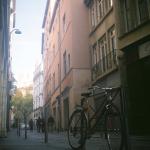|
Ducati Simplex |
Manufactured or assembled in Italy from (Circa) 1950 to (After) 1950.
Index of rarity in France: Rare (among non-specialized garage sales)
Inventory number: 10185
See the complete technical specifications
Chronology of cameras Ducati
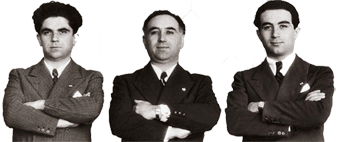 The SSR Ducati SpA was founded in Bologna in 1926 by the three brothers Adriano, Bruno and Marcello Ducati.
The SSR Ducati SpA was founded in Bologna in 1926 by the three brothers Adriano, Bruno and Marcello Ducati.
Adriano managed the research and development dpt, Marcello, the production and Bruno was the general manager in charge of the commercial domain and public relations.
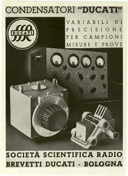 Ducati started its activity with the production of the Manens condenser.
Ducati started its activity with the production of the Manens condenser.
In 1932, the Ducati factory had around 500 employees. In 1934, Guglielmo Marconi (the inventor of the radio) visited it. In 1935, a new modern factory was built in Borgo Panigale (Province of Bologna). In 1937, the Ducati employed around 2,000 people. The company then began to diversify its activity in the fields of precision mechanics, electronics and, of course, optics.
The optical section was created in 1939 with the collaboration of the Institute of Optics in Florence.
During the war, the Ducati factories were put under supervision and took part in the war effort. In 1943, they received the order to be transferred to Germany. There is a risk of deportation of workers from the Borgo Panigale, Bazzano and Crespellano factories and dispersal of equipment. The transfer is partly avoided by partial decentralization in localities in northern Italy (Cavalese, Longare, Albizzate, Parona di Valpolicella, Saronno, Pianezza), while part of the machinery and raw materials are transported to various hiding places in Bologna. At this time, the range of products includes transmitting devices and optical instruments for the navy, rockets against bombs and prismatic binoculars, remote controls of pumps for aircraft engines and telegraph stations.
The Ducati brothers collaborated partly with the German occupiers (Bruno will risk being shot down in the post-war period for this reason), and partly worked to secure new projects and products for peacetime: for example, in Cavalese (TN), the optical branch, which produces the Bimar binoculars for the Germans, also manufactures the small Gioia projector for school use.
In the fall of 1944, Ducati executives went to Florence to ensure the collaboration of the best technicians Galileo and San Giorgio. There, a high-end micro-camera, called Sogno, is studied. About seventy special secret laboratories, called Posts, are also active. From there come the radio-electro-optical-mechanical products that Ducati will be able to launch on the market from the Milan Fair of 1946.
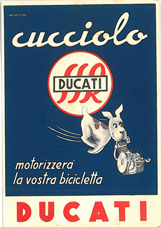
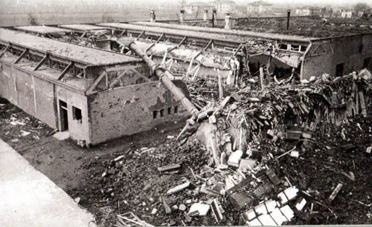 At the end of the war, the Ducati found themselves with a Borgo Panigale factory largely destroyed by Allied bombing (October 12, 1944, the factory was hit by 21 500-pound bombs in a first wave at 12:30 p.m. and 12 bombs one hour later). Thanks to a considerable financial effort from the Ducati brothers and little state aid, production restarted. In 1946, during the first post-war Milan fair, Ducati was present with its products. In particular with a small gasoline engine that can be connected to a bicycle called Cucciolo, but also with the Microcamera Sogno.
At the end of the war, the Ducati found themselves with a Borgo Panigale factory largely destroyed by Allied bombing (October 12, 1944, the factory was hit by 21 500-pound bombs in a first wave at 12:30 p.m. and 12 bombs one hour later). Thanks to a considerable financial effort from the Ducati brothers and little state aid, production restarted. In 1946, during the first post-war Milan fair, Ducati was present with its products. In particular with a small gasoline engine that can be connected to a bicycle called Cucciolo, but also with the Microcamera Sogno.
For the Ducati brothers, however, begins a painful period. They are tried for collaboration with the fascists, (charge of which they will be acquitted) then harassed by the new government via the FIM (a state agency, Institute for the reconstruction of industry). Finally, they are crushed by the financial consequences of rebuilding the factory and lose control of the business. In 1949, the company came under state control, just when camera production was stabilizing. In 1952, the optical division was closed. It is estimated that 10,000 Ducati Sognos have been produced and 8,000 Ducati Simplex. Adriano Ducati then decided to leave for the United States where he worked at NASA with Wernher von Braun. He did not return to Italy until 1985. Only Bruno returned to Ducati in 1998 as honorary president of the motorcycle division.
Sources : Mario Malavolti et Municipal Library of Bologna
Suite au succès du Leica, Ducati veut faire aussi bien, mais plus petit. Il lance, en 1948, le Sogno, superbe appareil qui n'a rien à envier à un Leica et qui est plus petit. Il utilise bien le film 35 mm, mais dans une cartouche à charger soi-même et qui ne contient que 15 vues ... 18 x 24 mm.
De l'idée initiale d'une gamme de plusieurs modèles, ne sort aux côtés du Sogno que le Simplex, sorte de version très simplifiée (objectif fixe, pas de télémètre). Cet appareil n'est produit qu'à environ 8 000 exemplaires car Ducati arrête rapidement la production photographique pour se concentrer sur le secteur plus rentable des deux-roues.
Les derniers exemplaires de cet appareil furent bradés, ne trouvant pas d'acquéreurs.
(source : P-H Pont)


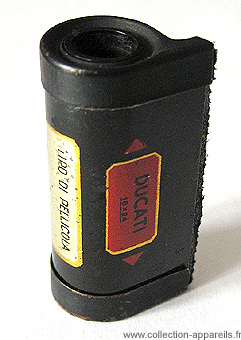
Interesting links or bibliography :
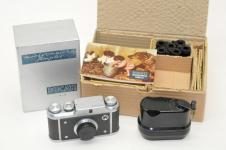 |
Add a link or element of bibliography, a picture taken with this camera, a picture of box or an ads about this camera
Your photos taken with the same camera:
Cameras from Ebay France (Ducati) (Uploaded each 3 hours)







